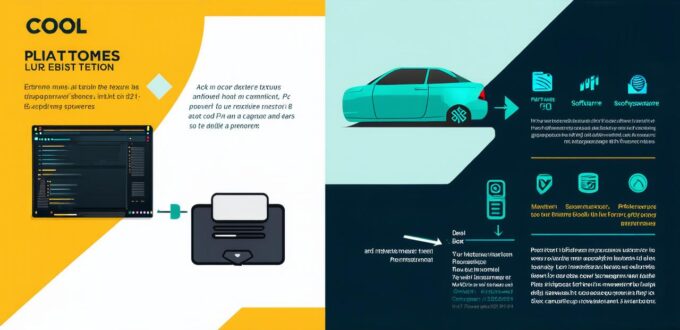In today’s technology-driven world, it is becoming increasingly common to hear terms like “platform” and “software” being used interchangeably. However, there is a significant difference between these two concepts that software developers must understand in order to create effective solutions.
What is Software?
At its core, software refers to a set of instructions that are stored and executed by a computer. Software can be designed for a wide range of purposes, including productivity tools, gaming applications, or enterprise solutions. The key characteristic of software is that it is created specifically to perform a particular task or set of tasks.
One example of software is Microsoft Word, which is a word processing application designed for creating documents such as reports, letters, and presentations. Microsoft Word is an example of standalone software, which means that it can be installed and run on any computer without the need for an internet connection or external dependencies. Standalone software is ideal for applications that require fast and reliable performance, such as gaming or video editing.
What is a Platform?
A platform, on the other hand, refers to a set of tools and resources that are designed to support the development and deployment of software. A platform provides a framework for building and distributing applications, allowing developers to focus on creating innovative solutions rather than worrying about the underlying infrastructure.
An example of a platform is the Android operating system, which is used by billions of smartphones around the world. Android is an open-source platform that provides a set of tools and resources for developing and deploying mobile applications. Developers can create new apps or extend existing ones using the Android SDK, without having to worry about the underlying hardware or operating system.
The Benefits of Software
One of the main benefits of software is its ability to automate repetitive tasks and improve efficiency. By creating customized solutions for specific purposes, software can streamline workflows and reduce the need for manual labor. Additionally, software can be easily scaled up or down depending on changing business needs, making it a flexible and cost-effective solution for many organizations.
The Benefits of Platforms
Platforms offer several benefits that make them ideal for software development. One of the main advantages of platforms is their ability to provide a consistent and reliable infrastructure for building and deploying applications. This allows developers to focus on creating innovative solutions rather than worrying about the underlying technology. Additionally, platforms are often designed to be scalable, allowing developers to easily extend their applications as business needs evolve.
The Drawbacks of Software
One of the main drawbacks of software is its limited flexibility. Standalone software is typically designed for a specific purpose and cannot be easily adapted to meet changing business needs. Additionally, software can be expensive to develop and maintain, especially for small businesses or startups.
The Drawbacks of Platforms
While platforms offer many benefits, they also have their drawbacks. One of the main challenges of working on a platform is the limited control that developers have over the underlying technology. This means that developers must be prepared to work within the constraints of the platform, which may not always align with their specific needs or requirements. Additionally, platforms can be vulnerable to security threats and hacking attempts, which can compromise the integrity of the applications built on top of them.
Case Study: Uber vs. Lyft

One of the most well-known examples of the platform vs software debate is the battle between Uber and Lyft, two popular ride-hailing services. Both Uber and Lyft use platforms to connect riders with drivers and facilitate the payment process. However, there are some key differences between the two companies that illustrate the benefits and drawbacks of each approach.
Uber is a software company that uses its own proprietary technology to power its ride-hailing platform. This allows Uber to have more control over the user experience and ensure that its drivers meet specific quality standards. However, this also means that Uber has limited flexibility in terms of integrating with other platforms or services.
Lyft, on the other hand, is a platform company that relies on partnerships with third-party providers to power its ride-hailing service. This allows Lyft to be more flexible and adaptable to changing business needs, but also means that it has less control over the user experience and may face challenges in terms of security and reliability.
Personal Experience: Building a Mobile App
As a software developer, I have had the opportunity to work on both software and platform projects. When building a mobile app, for example, it is important to consider the underlying platform that the app will run on. If the app is designed to be a standalone solution, it must be customized to meet the specific needs of the user and take into account the limitations of the hardware and operating system.
However, if the app is designed to be a web-based solution or an extension of an existing platform (such as a social media network), it can be more flexible and scalable. This allows developers to focus on creating innovative solutions rather than worrying about the underlying technology.
